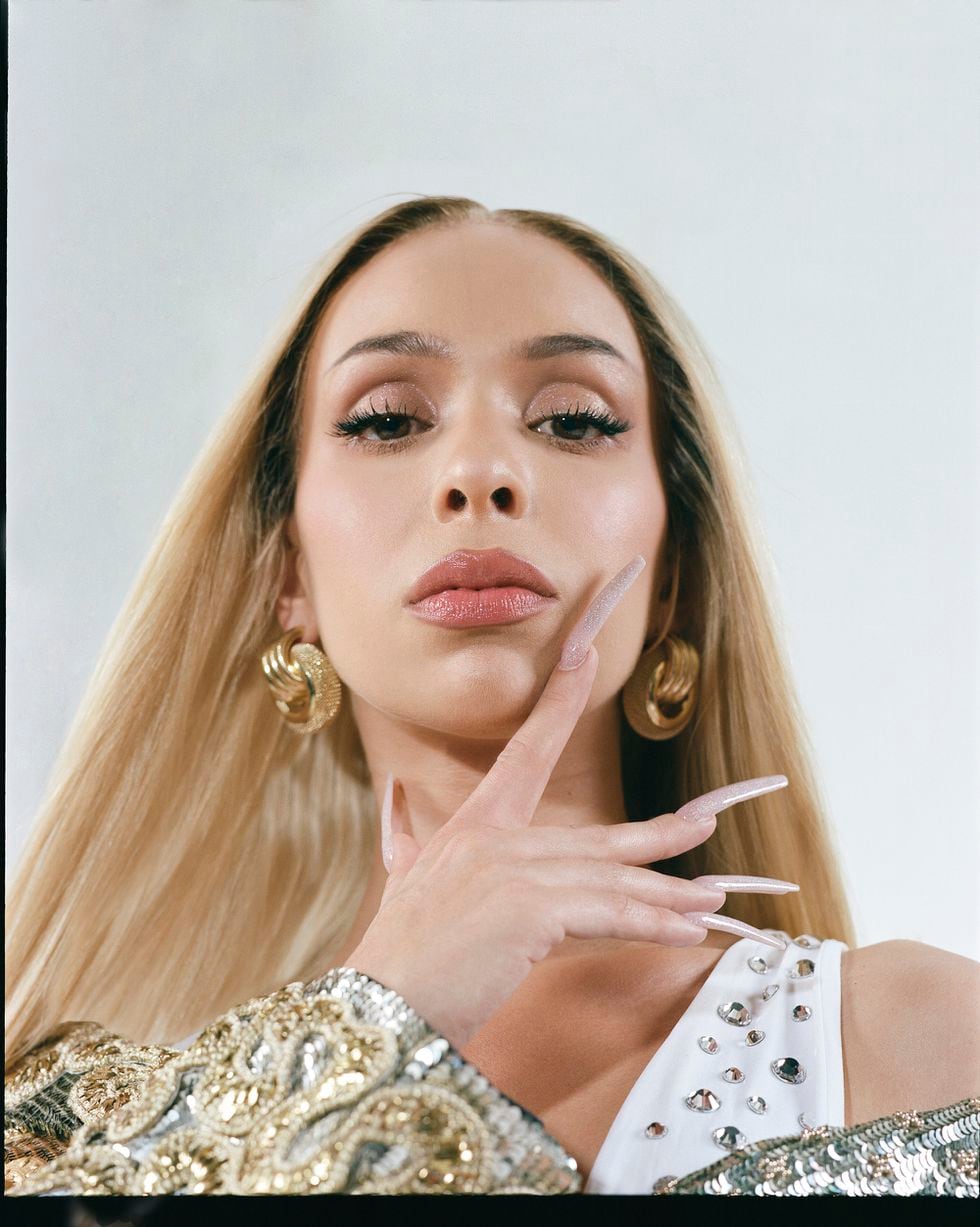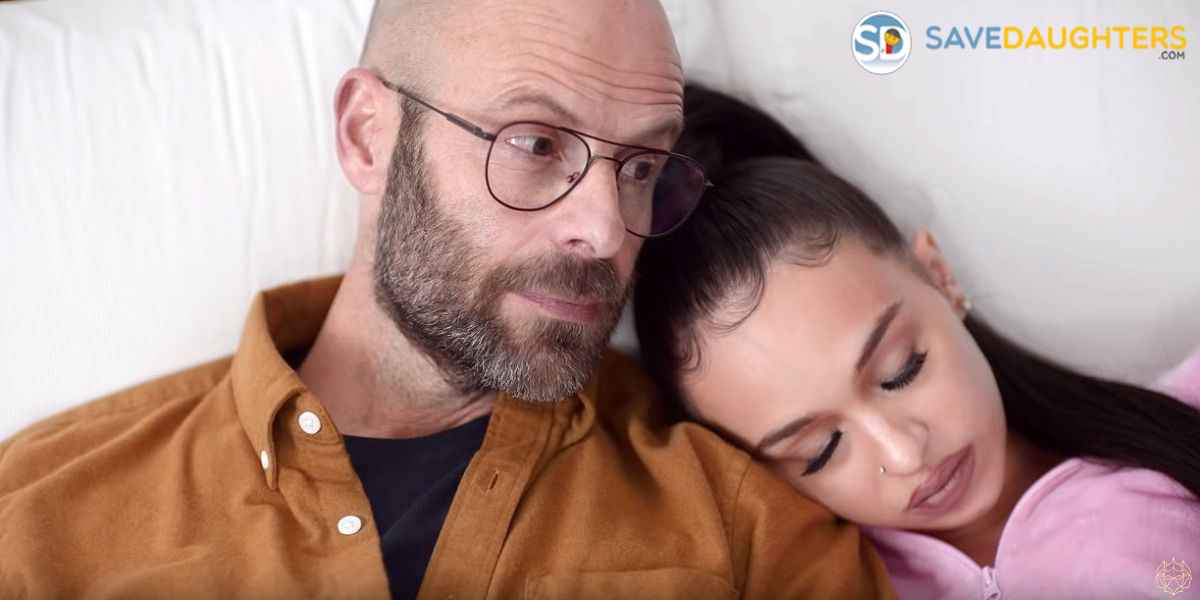Is Bad Gyal Trans? Exploring The Truth Behind The Question
Let's dive right into this burning topic that’s been sparking debates all over the internet. If you’ve been scrolling through social media or diving into online conversations, chances are you’ve come across the phrase “Bad Gyal.” But here’s the twist—what happens when we start questioning whether a Bad Gyal can also be trans? It’s not just about labels; it’s about understanding identity, representation, and breaking down stereotypes. So, buckle up because we’re about to uncover the truth behind this question.
The term “Bad Gyal” has become a cultural phenomenon, often associated with confidence, empowerment, and a certain swagger that commands attention. But let’s face it—when we talk about Bad Gyal, the conversation tends to focus on cisgender women. What about the trans community? Are they excluded from the Bad Gyal narrative, or is there more to the story than meets the eye?
This isn’t just a question of semantics; it’s about inclusivity, representation, and giving everyone a seat at the table. Whether you’re a Bad Gyal yourself or simply curious about the topic, this article will take you on a journey to explore the truth behind the question: Is Bad Gyal trans?
Read also:Unveiling The Mysteries Of Sone 436 Plot A Comprehensive Guide
Let’s break it down step by step and uncover the layers of this complex yet fascinating topic. Here’s what we’ll cover:
- What Does “Bad Gyal” Really Mean?
- Understanding Trans Identities
- Intersectionality and Representation
- The Role of Media in Shaping Perceptions
- Data and Statistics on Trans Representation
- Challenging Stereotypes
- Personal Stories: Voices of Trans Bad Gals
- How Society Can Be More Inclusive
- Looking Ahead: The Future of Bad Gyal Culture
- Final Thoughts and Call to Action
What Does “Bad Gyal” Really Mean?
If we’re gonna tackle this topic, we gotta start with the basics. What exactly does “Bad Gyal” mean? At its core, a Bad Gyal is someone who exudes confidence, owns their space, and isn’t afraid to be unapologetically themselves. It’s a term that celebrates individuality, empowerment, and the ability to rise above societal expectations.
But here’s the thing—when most people think of a Bad Gyal, they picture a cisgender woman. And while that’s valid, it doesn’t tell the whole story. The concept of being a Bad Gyal transcends gender identity, and that’s where things get interesting.
Breaking Down the Stereotypes
Stereotypes can be tricky. They often paint an incomplete picture, leaving entire communities out of the conversation. For example, when we talk about Bad Gyal culture, the focus is usually on traditional beauty standards, fashion, and behavior. But what happens when those standards don’t apply to everyone? That’s where the conversation around trans identities comes in.
Being a Bad Gyal isn’t about fitting into a mold—it’s about creating your own path and owning who you are. And that’s something that anyone, regardless of gender identity, can relate to.
Read also:Adalberto Martiacutenez Resortes A Celebrated Icon In Mexican Comedy
Understanding Trans Identities
Before we dive deeper into the Bad Gyal conversation, let’s take a moment to understand what it means to be trans. For those who might not be familiar with the term, “transgender” refers to individuals whose gender identity doesn’t align with the sex they were assigned at birth. It’s a broad spectrum that includes non-binary, genderqueer, and other identities that challenge traditional gender norms.
Key Facts About Trans Identities
- Transgender individuals make up an estimated 1.4 million people in the United States alone.
- Trans people face significant challenges, including discrimination, lack of representation, and barriers to healthcare.
- Despite these challenges, trans voices are becoming louder and more visible, paving the way for greater acceptance and understanding.
Understanding trans identities is crucial when we talk about Bad Gyal culture because it highlights the importance of inclusivity. A Bad Gyal isn’t defined by their gender identity—it’s about their attitude, confidence, and willingness to break boundaries.
Intersectionality and Representation
Intersectionality is a term that gets thrown around a lot, but what does it really mean? In simple terms, it’s about recognizing how different aspects of identity—like race, gender, sexuality, and socioeconomic status—intersect and shape our experiences. When we talk about Bad Gyal culture, intersectionality plays a huge role.
For trans individuals, intersectionality means acknowledging the unique challenges they face while also celebrating their contributions to society. It’s about creating spaces where everyone feels seen, heard, and valued.
The Importance of Representation
Representation matters. When we see people like us in media, politics, or everyday life, it sends a powerful message: We belong. For trans Bad Gals, representation is about breaking down barriers and showing the world that they can be just as powerful, confident, and unstoppable as anyone else.
But the reality is, trans representation is still lacking in many areas. According to a study by GLAAD, only 4% of LGBTQ characters on TV are trans. That’s a tiny fraction of the population, and it highlights the need for more diverse and authentic storytelling.
The Role of Media in Shaping Perceptions
Media has a massive influence on how we perceive the world. From TV shows to social media, the stories we consume shape our understanding of identity, culture, and community. When it comes to Bad Gyal culture, media plays a crucial role in shaping perceptions of what it means to be a Bad Gyal—and who gets to claim that title.
Positive Representation in Media
Thankfully, we’re starting to see more positive representation of trans Bad Gals in media. Shows like “Pose” and “RuPaul’s Drag Race” have brought trans voices to the forefront, showcasing their talent, resilience, and beauty. These platforms not only entertain but also educate, helping to break down stereotypes and build empathy.
But there’s still a long way to go. For every positive representation, there are countless negative portrayals that perpetuate harmful stereotypes. That’s why it’s important to support media that amplifies trans voices and tells authentic stories.
Data and Statistics on Trans Representation
Let’s talk numbers. Data can be a powerful tool for understanding the state of trans representation and identifying areas for improvement. Here are some key statistics:
- Only 12% of trans individuals report feeling fully accepted in their communities.
- Trans women of color are disproportionately affected by violence, with 82% of trans homicide victims in 2020 being Black or Latinx women.
- Despite these challenges, 70% of trans individuals say they feel more confident in expressing their true selves than ever before.
These numbers paint a complex picture of the trans experience. While progress is being made, there’s still a lot of work to do to ensure that trans Bad Gals have the support and resources they need to thrive.
Challenging Stereotypes
Stereotypes are like weeds—they keep popping up no matter how hard we try to get rid of them. When it comes to trans Bad Gals, stereotypes can be especially damaging. From assumptions about their appearance to questions about their authenticity, these stereotypes can create barriers that make it harder for them to be seen as Bad Gals.
How to Challenge Stereotypes
The good news is that challenging stereotypes is something we can all do. Here are a few tips:
- Listen to trans voices and amplify their stories.
- Question your own assumptions and biases.
- Support media, brands, and organizations that promote inclusivity.
By actively working to challenge stereotypes, we can create a world where everyone has the opportunity to be a Bad Gyal—no matter their gender identity.
Personal Stories: Voices of Trans Bad Gals
Nothing speaks louder than personal stories. Hearing directly from trans Bad Gals about their experiences can help us understand the realities they face and the triumphs they achieve. Here are a few voices to inspire and educate:
Ashley: “Being a Bad Gyal means owning who I am, no matter what society says. I’ve faced so many challenges, but I refuse to let anyone define me. I’m confident, fierce, and unapologetically myself.”
Jasmine: “Growing up, I never saw anyone like me in the media. But now, I’m proud to be a Bad Gyal and show the world that trans women can be just as powerful and beautiful as anyone else.”
Marie: “Being a Bad Gyal isn’t about fitting into a box—it’s about breaking it. I love fashion, music, and everything that makes me feel alive. And I’m not afraid to show it.”
How Society Can Be More Inclusive
Inclusivity isn’t just a buzzword—it’s a necessity. For trans Bad Gals to thrive, society needs to make some changes. Here’s how we can all contribute:
- Advocate for policies that protect trans rights and ensure equal access to healthcare, education, and employment.
- Create safe spaces where trans individuals can express themselves without fear of judgment or discrimination.
- Support trans-owned businesses and organizations that prioritize inclusivity.
By taking these steps, we can build a world where everyone has the opportunity to be a Bad Gyal—without compromise.
Looking Ahead: The Future of Bad Gyal Culture
The future of Bad Gyal culture is bright—and inclusive. As more people embrace the idea that being a Bad Gyal isn’t limited by gender identity, we’ll see a shift toward greater acceptance and understanding. Trans Bad Gals will continue to break barriers, challenge stereotypes, and inspire others to do the same.
But this isn’t just about the future—it’s about the present. Every day, trans Bad Gals are making waves in fashion, music, activism, and beyond. They’re proving that being a Bad Gyal is about more than just a label—it’s about living authentically and unapologetically.
Final Thoughts and Call to Action
So, is Bad Gyal trans? The answer is a resounding yes. Being a Bad Gyal isn’t about fitting into a mold—it’s about breaking it. It’s about confidence, empowerment, and owning who you are, regardless of your gender identity.
As we wrap up this conversation, I want to leave you with a call to action. Whether you’re a Bad Gyal yourself or simply someone who cares about inclusivity, there are things you can do to make a difference:
- Amplify trans voices and support their work.
- Challenge stereotypes and biases whenever you encounter them.
- Be an ally and advocate for policies that promote equality and justice.
Together, we can create a world where everyone has the opportunity to be a Bad Gyal—and that’s a future worth fighting for. So, what are you waiting for? Let’s get out there and make some noise!


